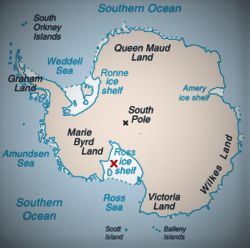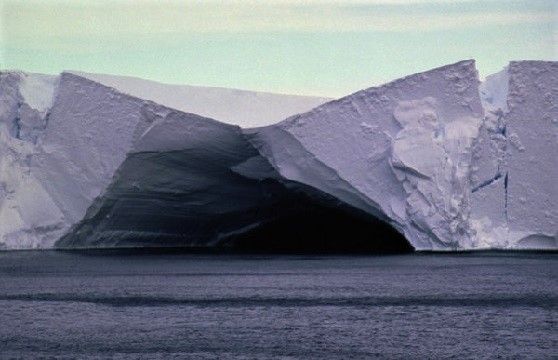Ice Covering The Arctic Ocean Melting Faster Than Anticipated
Jul 21, 2019 • 22 views
Greenhouse effect, global warming, pollution, overuse of non-renewable energy; whatever we choose to name it, one way or the other it is costing lives of innocents and we are on the list as well although not so innocent.
Thousands of penguins wiped out.

With the sudden rising of the mercury level in recent years we have seen unusual changes in weather pattern throughout the world. This made the Arctic part to grab our attention as the spiking up of the temperature around the North Pole has lead Ice caps of the Arctic Ocean to reach second lowest recorded level; with July 2012 leading the list said the Colorado-based National Snow & Ice Data Center.
This heat wave has also affected several regions of Alaska along with Canada and Greenland. As observed over the last three decades, the melting of ice caps is becoming faster with time, causing an additional loss of almost 20,000 square kilometers of ice cover per day, almost the area of Wales.

As spring approaches in the northern hemisphere the ice caps begins to melt; as day grows cooler and shorter the ice starts to build toward the end of September. The satellite service has reported that they have observed a high number of wild fires in the Arctic Circle in last few weeks in the few areas of Alaska and Siberia.
Although throughout the entire expanse of the Ross Ice Shelf it appears to be stable, but scientists claimed that the north-west portion of the Ross Ice Shelf is interacting quite differently with the ocean beneath it, melting it faster than it could be regenerated.
Dr Craig Stewart from the National Institute of Water and Atmospheric Research, New Zealand explained how the heated surface water plays a important role in melting of the ice shelves, although the stability of the shelves also depends on the deep ocean waters to some extent.

Research observations have shown that the feeding glaciers speed can be doubled or even tripled when ice shelves collapses. We have already witnessed several ice shelves disappear throughout the planet, Ross shelf being hundred times larger than most of the shelves we have seen to vanish.
This unprecedented fast melting has affected a large area of ocean close to the shelf that is void of sea-ice due to strong offshore winds.
Researchers said one are of the Antarctica's Ross Ice Shelf is melting relatively faster due to comparatively warm ocean current getting under the shelf through a cavity. These observations have allowed scientists, meteorologists to extrapolate future sea level and it is seems like a grave concern.

The Ross Ice Shelf is a monstrous frozen cap floating in the southern part of Antarctica's Ross Sea. It`s size is comparable to that of size of France. Matter of fact, it is about 750m thick in some parts. To be specific, the Ross Ice Shelf plays a very important role in maintaining ice caps of this area of Antarctica. The Ross Ice Shelf like few other are formed by glaciers continuously feeding them. The shelves in turn act moderates the rate of melting of the glaciers' surfaces.
In few other parts of Antarctica, warm ocean water has affected the thickness of several ice shelves recent years, thinning them on a regular basis to a critical height. Climate change is expected to result in elevated ocean surface temperatures in the Ross Sea as well as less sea ice.
To be conclusive the ice melting rates in several regions will increase in the near future, it is peak time to reconsider our lifestyle in order to prevent mass extinction due to rising level.
